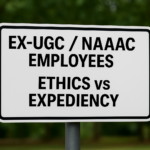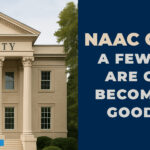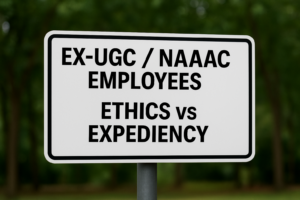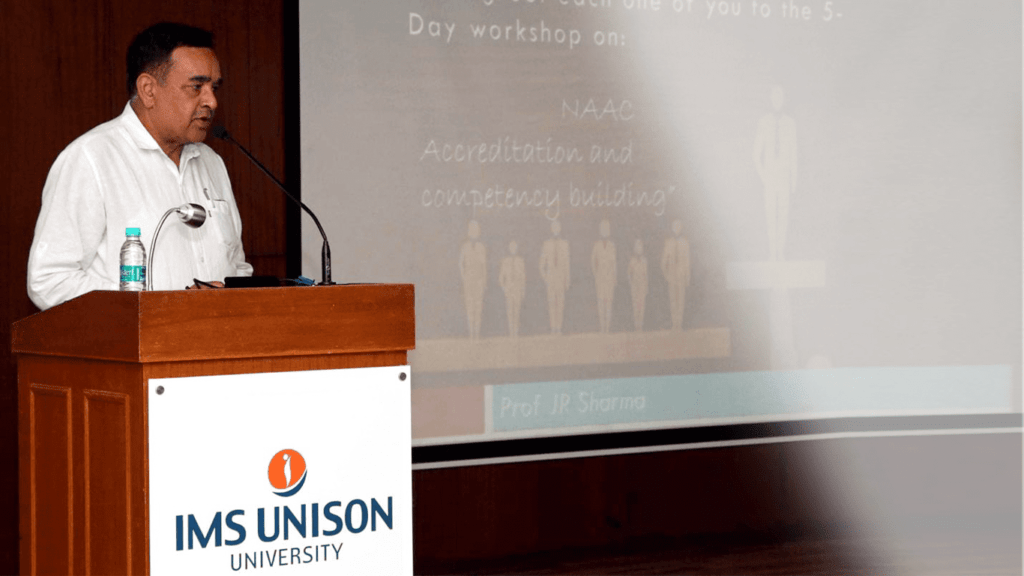1. In a devil’s hurry to apply: Institutes which go for the NAAC accreditation in a jiffy, half-prepared, immediately after becoming eligible i.e.6 years’ of establishment or 2 batches passed out, are bound to meet a waiting disaster. Only if an institute gets ‘A’ series NAAC grade, the chances are that its brand credibility would otherwise take a big hit. The patent reason, why institutes shouldn’t go too early for the NAAC is that, NAAC requires 5 years’ of record on most metrics, and newly established institutes have their hands full in the first 2 to 3 years in more important issues. Therefore, take another 2 to 3 years after becoming eligible. First, build top grade abilities.
2. IQAC and Steering Committee lacking knowledge and motivation: NAAC preparedness begins with, by establishing a capable and an effective IQAC which would go on to build the needed competency and capacity for attainment of the set accreditation objectives. IQAC is required to frame policies, guidelines, standing operating procedures and establish academic processes which require a high degree of professional work. For example, if IQAC or Steering Committee is unaware of ‘assessment and evaluation’ system of ‘outcome-based education’, fails to suitably map assessment and teaching tools with the course outcomes, arrive at levels of attainments, it would not do the justice in having institute’s programs fully immersed in its implementation. There is a lot, IQAC needs to do. In addition, NAAC Steering Committee, in co-ordination with IQAC should be capable of writing superior content on all qualitative metrics, particularly, institute’s distinctiveness, innovative best practices, executive summary etc. It must be remembered that the innovative practices should have been in place for at least 2 to 3 years so that an impact analysis is documented for effect.
3. Misinterpretation of Metrics: There are a number of ambiguities in the NAAC metrics, as of now. A number of institutes fail to interpret the same to their advantage. A good opportunity exists for nearly every institute to score 100 percent marks in at least a dozen of metrics. There are other metrics which can be opted out, following a strategy, perhaps best advised by a top NAAC consultant. A few metrics of the first 2 to 3 years of institute’s inception, can be re-built by tracing events history and collecting whatever raw evidence of the past could be mustered. Research papers and books hold the key. Hence institutes need to motivate their faculty from the very inception to write at least two research paper by every faculty in an academic year for all the 5 years and have these published in peer reviewed /UGC approved journals as also at least 15 to 20% faculty should write books and chapters in books. All out effort must be directed to file patents. All these measures are necessary to offset any disadvantage of external funded research projects and consultancy outreach.
4. Students’ Survey: Often institutes simply inform their students of an upcoming NAAC mail, they would receive, requiring them to submit institute’s feedback. This alone doesn’t connect students with their institute and hence invites a negative feedback. A couple of sessions need to be organized to broadly explain the gist of NAAC process, benefits to the Alma Mater, benefits to students, role and responsibility of students and a need for max participation. You can brief students on some major student-specific initiatives taken with attainments and brief them on future plans. Do and ask them to give constructive and fair feedback of their loved Alma Mater. Any distinguished external resource or a leading NAAC accreditation expert can be called to deliver a seminar.
5. Poor attention to Institute’s Website: Website carries the first impression of an institute. It certainly invites the attention of the visiting peer team. A number of institutes ignore the importance and end-up in creating a poor impression on the visiting team. Be it a design, navigation, content or look-feel, a website must carry a striking professional appeal, highlighting institute’s academic and research strength and vibrant students’ campus life. Good institutes showcase students and faculty achievements on the website banners, whereas poor institutes have their focus on the pictures of the governing body and management, receiving/ conferring awards. Quality of content is undoubtedly a prime factor that creates the desired impact. Institutes often make a big mistake in not investing enough on the website quality.
6. Plagiarized Content: It is no secret that in most institutes, there is a huge dearth in faculty writing a simple well worded and effective professional content. The resulting inability often lends itself to cut-copy-paste SSR content from the website of eminent institutes. Though, it appears that NAAC is currently missing out on plagiarism check (DVV is perhaps only verifying quantitative metrics), however, it can be said with certainty that NAAC would soon plug this hole and penalize defaulting institutes for the plagiarized content.
7. Hesitation in taking Mentoring services of an Expert: Be it an internal expert, a NAAC mandated resource or a private top NAAC consultant of credibility, it always pays to engage a mentor/consultant. This practice is a mandatory requirement in various leading accrediting agencies of the world namely, ABET, AACSB and others, but unfortunately quite discouraged in India. A consultant should be able to audit institute’s preparedness, provide clarity on each metric, deliver sustained mentoring, carryout mock inspection and guide institute in attaining its accreditation objective.
-The writer Prof JR Sharma is the Managing Director of STEMBOGEL and leads its ‘Accreditation Edge’ enterprise on global-best-practices in accreditations, as its Principal Consultant.












